|
Books Should Be Free Loyal Books Free Public Domain Audiobooks & eBook Downloads |
|
|
Books Should Be Free Loyal Books Free Public Domain Audiobooks & eBook Downloads |
|
Top Authors |
|---|
|
Book type:
Sort by:
|
By: William Hazlitt (1778-1830) | |
|---|---|
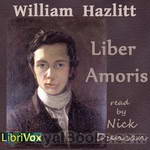 Liber Amoris
Liber Amoris
Liber Amoris is unlike anything Hazlitt wrote and probably like nothing you've come across before. On the face of it it tells the story of Hazlitt's infatuation with his landlords daughter. Hazlitt was middle aged and she young and pretty, a bit of a coquette from the sound of it. It turned out badly for Hazlitt and the book tells the story of this doomed love. Critics have always been divided about the merit of the piece. Even those who see its merit often feel more comfortable with his polished literary works, and perhaps rightly so... | |
By: Mrs. Henry Wood (1814-1887) | |
|---|---|
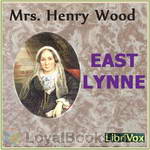 East Lynne
East Lynne
Ellen Wood (1814-1887) was an English novelist, better known as Mrs. Henry Wood. She wrote over 30 novels, many of which (especially East Lynne which was a Victorian best seller and is still sometimes performed as a drama) enjoyed remarkable popularity. Lady Isabel Carlyle, a beautiful and refined young woman, leaves her hard-working but neglectful lawyer-husband and her infant children to elope with an aristocratic suitor. After he deserts her, and she bears their illegitimate child, Lady Isabel disguises herself and takes the position of governess in the household of her husband and his new wife". Summary by Wikipedia | |
By: Isabella L. Bird (1831-1904) | |
|---|---|
 Unbeaten Tracks in Japan
Unbeaten Tracks in Japan
Isabella Lucy Bird was a 19th century English traveller, writer, and natural historian. She was a sickly child, however, while she was travelling she was almost always healthy. Her first trip, in 1854, took her to America, visiting relatives. Her first book, The Englishwoman in America was published anonymously two years later. Unbeaten Tracks in Japan is compiled of the letters she sent to her sister during her 7 months sojourn in Japan in 1878. Her travels there took her from Edo (now called Tokyo) through the interior - where she was often the first foreigner the locals had met - to Niigata, and from there to Aomori... | |
 Among the Tibetans
Among the Tibetans
Isabella L. Bird was an English traveller, writer and natural historian. She was travelling in the Far East alone at a time when such endeavours were risky and dangerous even for men and large, better equipped parties. In "Among the Tibetans", Bird describes her tour through Tibet with her usual keen eye: From descriptions of the landscape and flora to the manners, customs and religion of the local people we get a fascinating account of a world long past. | |
By: Dion Clayton Calthrop (1878-1937) | |
|---|---|
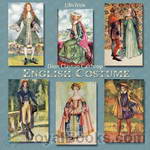 English Costume
English Costume
The world, if we choose to see it so, is a complicated picture of people dressing and undressing. The history of the world is composed of the chat of a little band of tailors seated cross-legged on their boards; they gossip across the centuries, feeling, as they should, very busy and important. As you will see, I have devoted myself entirely to civil costume—that is, the clothes a man or a woman would wear from choice, and not by reason of an appointment to some ecclesiastical post, or to a military calling, or to the Bar, or the Bench. Such clothes are but symbols of their trades and professions, and have been dealt with by persons who specialize in those professions. | |
By: Charles Alexander Eastman (1858-1939) | |
|---|---|
 Indian Child Life
Indian Child Life
The author was raised as an American Indian and describes what it was like to be an Indian boy (the first 7 chapters) and an Indian Girl (the last 7 chapters). This is very different from the slanted way the white man tried to picture them as 'savages' and 'brutes.'Quote: Dear Children:—You will like to know that the man who wrote these true stories is himself one of the people he describes so pleasantly and so lovingly for you. He hopes that when you have finished this book, the Indians will seem to you very real and very friendly... | |
By: Charles Alexander Eastman (1858-1939) | |
|---|---|
 Indian To-day
Indian To-day
Based in part upon the author's own observations and personal knowledge, it was the aim of the book to set forth the status and outlook of the North American Indian. He addressed issues such as Indian schools, health, government policy and agencies, and citizenship in this book. In connection with his writings, Eastman was in steady demand as a lecturer and public speaker with the purpose of interpreting his race to the present age. | |
By: William Henry Davies (1871-1940) | |
|---|---|
 Foliage: Various Poems
Foliage: Various Poems
W. H. Davies was a Welsh poet and writer. Davies spent a significant part of his life in the United Kingdom and United States, becoming one of the most popular poets of his time. Davies is usually considered one of the Georgian poets, although much of his work is atypical of the style and themes adopted by others of the genre. | |
By: Joseph Plumb Martin (1760-1850) | |
|---|---|
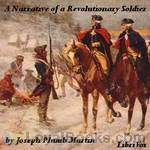 A Narrative of a Revolutionary Soldier
A Narrative of a Revolutionary Soldier
Joining the Continental Army as a teenager, Joseph Plumb Martin spent the next eight years fighting in the Revolutionary War as an enlisted man. His memoirs tell in detail his experiences during that time...the bitter cold, hunger, loss of life, long marches, and fear of battle. He also includes tales of fishing, hunting, and other activities...including encounters with a "saucy miss". His narrative reveals much about American life at the time and is one of the fullest and best accounts of the Revolutionary War, presented from a private's point of view.The book has been later republished under the names Private Yankee Doodle and Memoir of a Revolutionary Soldier. | |
By: Pauline Elizabeth Hopkins (1859-1930) | |
|---|---|
 Contending Forces
Contending Forces
Pauline Elizabeth Hopkins, despite an impressive record of productivity and creativity as a novelist, playwright, short fiction writer, editor, actress, and singer, is an African-American woman writer who has essentially been consigned to the dustbins of American literary history. Though contemporary with Frances Ellen Watkins Harper, Charles W. Chesnutt, and Paul Laurence Dunbar, Hopkins is only now beginning to receive the kind of critical attention that Harper has enjoyed for a slightly longer period and that Chesnutt and Dunbar have always had... | |
By: Jean-Henri Fabre (1823-1915) | |
|---|---|
 Mason-Bees
Mason-Bees
This is more than a book about bees and their lives; the author talks about his cats, red ants, and insect psychology in general. Jean Henri Fabre also made waves in his native 19th Century France by insisting that girls be included in his science classes, so I dedicate this recording to certain young women who risk their lives or even the less important attentions of boys simply to learn. | |
 Life of the Fly, With Which are Interspersed Some Chapters of Autobiography
Life of the Fly, With Which are Interspersed Some Chapters of Autobiography
The title tells all, along with other observations on insect life from the famed accidental entomologist of 19th Century France.. | |
By: Gustave Le Bon (1841-1931) | |
|---|---|
 Crowd
Crowd
"Civilisations as yet have only been created and directed by a small intellectual aristocracy, never by crowds. Crowds are only powerful for destruction. Their rule is always tantamount to a barbarian phase. A civilisation involves fixed rules, discipline, a passing from the instinctive to the rational state, forethought for the future, an elevated degree of culture — all of them conditions that crowds, left to themselves, have invariably shown themselves incapable of realising. In consequence of the purely destructive nature of their power crowds act like those microbes which hasten the dissolution of enfeebled or dead bodies... | |
By: Mary T. Waggaman (1846-1931) | |
|---|---|
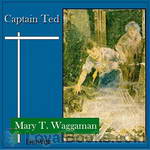 Captain Ted
Captain Ted
When tragedy hits his family, in the form of a sudden illness to his father, young Teddy Thornton is forced to leave school and find work to help support his family. Without his realization he is thrown into a world of crime and counterfeiting. Will he do the right thing, or will he unwittingly be drawn down the wrong path? And will the mystery of Heron Hall be solved? | |
By: Fanny Fern | |
|---|---|
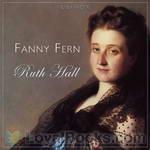 Ruth Hall
Ruth Hall
This is a COMPELLING semi-autobiography of a woman who experienced severe highs and lows! Starting many things at a very young age in life & experiencing incredible happiness! Only all too soon to find herself in extreme opposite situations. This book shows some of the true heartlessness that some human beings can display, as well as some family. It conveys hypocrisy of some in the religious world. It also displays true grit and what desperation can do to drive a person! This book will inevitably cause the reader to experience several emotions and thoughts, some pleasant, some not so nice. "Live" the journey along with the author! A MUST read! (Written by Deborah Knight) | |
By: Lucy Madox Rossetti (1843-1894) | |
|---|---|
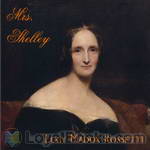 Mrs. Shelley
Mrs. Shelley
I have to thank all the previous students of Shelley as poet and man--not last nor least among whom is my husband--for their loving and truthful research on all the subjects surrounding the life of Mrs.Shelley. -Lucy Madox Brown Rossetti Mrs. Shelley is a biography of Mary Wollstonecraft Godwin Shelley, author of Frankenstein and other works, wife of Percy Shelley, daughter of Mary Wollstonecraft Godwin who penned The Vindication of the Rights of Women, and daughter of William Godwin, a philosopher and novelist... | |
By: Maria Parloa (1843-1909) | |
|---|---|
 Chocolate and Cocoa Recipes and Home Made Candy Recipes
Chocolate and Cocoa Recipes and Home Made Candy Recipes
A selection of chocolate recipes which were produced for Walter Baker & Co, the oldest producer of chocolate in the United States. Advertisements used by Walter Baker & Co can be found in Section 7. They are read by: Cori Samuel, Peter Why, David Lawrence, BookAngel7, ashleighjane and Joanne Rochon. | |
By: Pierre-Joseph Proudhon (1809-1865) | |
|---|---|
 What is Property? An Inquiry into the Principle of Right and of Government
What is Property? An Inquiry into the Principle of Right and of Government
What Is Property?: or, An Inquiry into the Principle of Right and of Government (French: Qu'est-ce que la propriété ? ou Recherche sur le principe du Droit et du Gouvernment) is an influential work of nonfiction on the concept of property and its relation to anarchist philosophy by the French anarchist and mutualist Pierre-Joseph Proudhon, first published in 1840. In the book, Proudhon most famously declared that “property is theft”. Proudhon believed that the common conception of property conflated two distinct components which, once identified, demonstrated the difference between property used to further tyranny and property used to protect liberty... | |
By: F. M. Mayor (1872-1932) | |
|---|---|
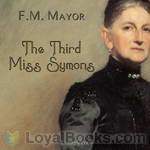 The Third Miss Symons
The Third Miss Symons
Miss Mayor tells this story with singular skill, more by contrast than by drama, bringing her chief character into relief against her world, as it passes in swift procession. Her tale is in a form becoming common among our best writers; it is compressed into a space about a third as long as the ordinary novel, yet form and manner are so closely suited that all is told and nothing seems slightly done, or worked with too rapid a hand. | |
By: Gertrude Burford Rawlings | |
|---|---|
 The Story of Books
The Story of Books
Rawlings follows the development of printing from the origins of writing to modern printing. Some of the earliest records are ancient Egyptian, Greek and Roman recordings on papyrus and wax tablets. However, Rawlings acknowledges the sparse nature of this first fragile evidence, and limits speculation.Later, libraries of religious books grew in Europe, where monks copied individual books in monasteries. The "block printing" technique began with illustrations carved in wood blocks, while the text needed to be written by hand... | |
By: Francis Hopkinson Smith (1838-1915) | |
|---|---|
 Little Gray Lady
Little Gray Lady
As every Christmas for the last 20 years, the Little Gray Lady lights a candle in her room and spends the evening alone, thinking of a great mistake she has made so long ago. This year, however, things are to play out differently.. | |
By: Wayne Whipple (1856-1942) | |
|---|---|
 Story of Young Abraham Lincoln
Story of Young Abraham Lincoln
This is a careful and fascinating collection of interviews with people who knew Lincoln as a boy and young man. A glimpse into the type of person he was from the very beginning. "All the world loves a lover"—and Abraham Lincoln loved everybody. With all his brain and brawn, his real greatness was in his heart. He has been called "the Great-Heart of the White House," and there is little doubt that more people have heard about him than there are who have read of the original "Great-Heart" in "The Pilgrim's Progress... | |
By: Thomas Beer | |
|---|---|
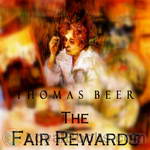 The Fair Rewards
The Fair Rewards
"The Fair Rewards" by Thomas Beer . . . is a really distinguished novel. The writing is far above the average: it has style and sophistication and personality, intermingled with a truly vivid show of imagination. It even borders on brilliancy, but it is a hard, cold, cynical sort of brilliancy that chills. It almost hurts . . . The title itself is indicative of cynicism. It is derived from Shakespeare's quotation, "These be the fair rewards of those that love," and it is an ironical reference, for Mark Walling, the blind, simple, loving idolater, in return for his great and unselfish devotion to Margot, reaps selfishness and ingratitude and lack of consideration... | |
By: Francis Coventry (1725-1754 or 1759) | |
|---|---|
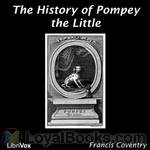 The History of Pompey the Little
The History of Pompey the Little
"Pompey, the son of Julio and Phyllis, was born A.D. 1735, at Bologna in Italy, a place famous for lap-dogs and sausages." At an early age he was carried away from the boudoir of his Italian mistress by Hillario, an English gentleman illustrious for his gallantries, who brought him to London.The rest of the history is really a chain of social episodes, each closed by the incident that Pompey becomes the property of some fresh person. In this way we find ourselves in a dozen successive scenes, each strongly contrasted with the others... | |
By: Hesiod | |
|---|---|
 Works and Days, The Theogony, and The Shield of Heracles
Works and Days, The Theogony, and The Shield of Heracles
Works and Days provides advice on agrarian matters and personal conduct. The Theogony explains the ancestry of the gods. The Shield of Heracles is the adventure of Heracles accepting an enemy's challenge to fight. | |
By: Cyrus Townsend Brady (1861-1920) | |
|---|---|
 And Thus He Came
And Thus He Came
These short stories, perhaps we might call them modern parables, are not the usual fare of warm and fuzzy Christmas stories (pleasing as those are) but rather life events and crises triggered by Christmas, present or imminent. Brady was a journalist, historian, adventure writer, and Episcopal priest. | |
By: Alice B. Emerson | |
|---|---|
 Ruth Fielding of the Red Mill
Ruth Fielding of the Red Mill
Brave, adventurous and loyal, recently-orphaned Ruth Fielding is sent to live with her estranged Uncle Jabez at the Red Mill in Cheslow, New York. A new town means making new friends, and the teenage Ruth quickly befriends the children of a wealthy merchant. But as the relationship between her and her uncle becomes strained and she attempts to become friends with a very disagreeable girl, will Ruth's cheery disposition be enough to get her through?This is the first of the Ruth Fielding series, with follows Ruth and her friends from adolescence into early adulthood. | |
 Ruth Fielding at Briarwood Hall
Ruth Fielding at Briarwood Hall
In this, the second book of the Ruth Fielding series, Ruth goes to boarding school with her best friend Helen. When they get there, Ruth starts her own sorority called the SweetBriars for the new girls. Her sweet group of girls conflicts with the two other sororities the Upedes and the Fussy Curls. In the midst of settling in to the new place, there is a campus rumor about a legend of the marble harp playing ominously at night. But when the French teacher is in a fright, will Ruth be able to solve this mystery?The Ruth Fielding series has influenced several other major series that came later, including Nancy Drew, the Dana Girls, and Beverly Gray. | |
By: Edith Birkhead (1889-1951) | |
|---|---|
 Tale of Terror: A Study of the Gothic Romance
Tale of Terror: A Study of the Gothic Romance
A seminal essay on the development of horror as a genre, highly influential on later writers. | |
By: Peter Fisher (1782-1848) | |
|---|---|
 History of New Brunswick
History of New Brunswick
Originally published in 1825 under the title: Sketches of New Brunswick : containing an account of the first settlement of the province, with a brief description of the country, climate, productions, inhabitants, government, rivers, towns, settlements, public institutions, trade, revenue, population, &c., by an inhabitant of the province. The value of this history is in the fact that it was written when the Province was still in its infancy. Although there had been a few small settlements established in New Brunswick prior to 1783, the main influx of settlers were Loyalists who chose to remove to the area from the United States following the American Revolution. | |
By: Frances Trego Montgomery (1858-1925) | |
|---|---|
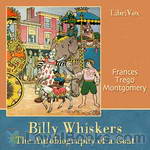 Billy Whiskers, the Autobiography of a Goat
Billy Whiskers, the Autobiography of a Goat
This delightful children's story can be enjoyed by kids and adults alike! A mischievous goat, Billy Whiskers, gets into trouble so often that the book could be named, "Billy Trouble Whiskers"! This humorous story will bring you many chuckles and give you a chance to get lost in Billy's adventures with childlike enthusiasm. From riding in a police car, to being a firehouse mascot, getting married, and finding himself a circus goat, Billy's adventures will certainly keep you entertained! (Introduction by Allyson Hester) | |
By: Zoe Anderson Norris | |
|---|---|
 The Way of the Wind
The Way of the Wind
From the comfort of the hills of Kentucky traveled Celia and her husband Seth to the desolate prairies of Kansas, where cyclones, tornadoes, and endless wind were to greet them. Always, there was the wind cutting across the plains as the young couple builds their home while working the soil, while Seth awaits the wise men of the east to begin building the magic city where he has staked his territory on the plains. But sometimes life plays cruel tricks upon us. Sometimes our hopes are dashed by happenstance... | |
By: Mary Roberts Rinehart (1876-1958) | |
|---|---|
 Oh, Well, You Know How Women Are and Isn't That Just Like a Man!
Oh, Well, You Know How Women Are and Isn't That Just Like a Man!
This warm, affectionate duet of essays by two of the early twentieth century's most popular writers is a bit dated but still entertaining. | |
By: 'Abdu’l-Bahá ‘Abbás (1844-1921) | |
|---|---|
 The Mysterious Forces of Civilization
The Mysterious Forces of Civilization
The Mysterious Forces of Civilization (Persian: Risálih-i-Madaníyyih) is a work written before 1875 by ‘Abbás Effendí, known as ‘Abdu’l-Bahá (the Servant of Bahá) (1844-1921). The Persian text was first lithographed in Bombay in 1882 and printed in Cairo in 1911. ‘Abdu’l-Bahá was the eldest son and appointed successor of Bahá’u’lláh, the Founder of the Bahá’í Faith. The original text of this work was written and published anonymously, and the first English translation (by Johanna Dawud) was published in London in 1910 and Chicago in 1918, under the title ‘Mysterious Forces of Civilization’ written by "an Eminent Bahai Philosopher... | |
By: Susanna Rowson (1762-1824) | |
|---|---|
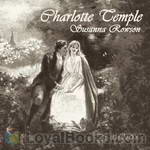 Charlotte Temple
Charlotte Temple
Charlotte Temple, a cautionary tale for young women, follows the unfortunate adventures of the eponymous heroine as she is seduced by a dashing soldier, Montraville. Influenced by both her lover and an unruly teacher at her boarding school, she is persuaded to run away to America, where she is eventually abandoned by Montraville after he becomes bored, leaving her alone and pregnant. First published in England in 1791, it went on to become America's bestselling novel, only being ousted by Harriet Beecher Stowe's Uncle Tom's Cabin. | |
By: Jim Kjelgaard (1910-1959) | |
|---|---|
 The Black Fawn
The Black Fawn
Bud Sloan was an orphan who had been 'sold out' of the orphanage to work on a farm once he'd been old enough to labor. The farm where he was to work was owned by an aging farmer and his wife who had raised a large family and were now left alone. One day, after his chores were done, Bud wandered into the woods nearby and with mouth agape, he noticed a newborn jet black fawn all alone and apparently confused in his new surroundings. Bud resolved that day that this baby fawn was just like himself, an orphan, and would be bound to him in spirit... | |
By: Franz Liszt (1811-1886) | |
|---|---|
 Life of Chopin
Life of Chopin
Chopin was a romantic era Polish composer. This work is a memoir by Liszt who knew Chopin both as man and artist. This memoir gives a unique understanding to the psychological character of the compositions of Chopin. It also offers Liszt's insight into some of Chopin's polonaises, especially the grand polonaise in F sharp minor. Liszt explains the strange emotion "ZAL" which is inclosed in his compositions. Then, presents a brief sketch on the lives of other great people in Chopin's circle. After that, Liszt discusses Chopin's fame and early life. Finally, Liszt gives a detailed account on Chopin's sufferings due to ill health and the unfortunate departure of the great composer. | |
By: Westminster Divines (1646) | |
|---|---|
 The Westminster Confession of Faith
The Westminster Confession of Faith
The Westminster Confession of Faith is a Reformed confession of faith, in the Calvinist theological tradition. Although drawn up by the 1646 Westminster Assembly, largely of the Church of England, it became and remains the 'subordinate standard' of doctrine in the Church of Scotland, and has been influential within Presbyterian churches worldwide. | |
By: Martha Summerhayes (1844-1911) | |
|---|---|
 Vanished Arizona: Recollections of the Army Life of a New England Woman
Vanished Arizona: Recollections of the Army Life of a New England Woman
This is the lively autobiography of Martha Summerhayes, the wife of an officer in the American Army. Here, she tells many stories about life and conditions in different camps and forts in which she lived with her expanding family, people along the way, and Journeys. | |
By: Andrew Carnegie (1835-1919) | |
|---|---|
 James Watt
James Watt
This biography of the inventor James Watt covers his early years, successes and failures, and legacy. | |
 Autobiography of Andrew Carnegie
Autobiography of Andrew Carnegie
This autobiography of Andrew Carnegie is a very well written and interesting history of one of the most wealthy men in the United states. He was born in Scotland in 1835 and emigrated to America in 1848. Among his many accomplishments and philanthropic works, he was an author, having written, besides this autobiography, Triumphant Democracy (1886; rev. ed. 1893), The Gospel of Wealth, a collection of essays (1900), The Empire of Business (1902), and Problems of To-day (1908)]. Although this autobiography was written in 1919, it was published posthumously in 1920. | |
By: Wassily Kandinsky (1866-1944) | |
|---|---|
 Concerning the Spiritual in Art
Concerning the Spiritual in Art
Published in 1911, Kandinsky's book compares the spiritual life of humanity to a pyramid -- the artist has a mission to lead others to the pinnacle with his work. The point of the pyramid is those few, great artists. It is a spiritual pyramid, advancing and ascending slowly even if it sometimes appears immobile. During decadent periods, the soul sinks to the bottom of the pyramid; humanity searches only for external success, ignoring spiritual forces. | |
By: Percy Marks (1891-1956) | |
|---|---|
 The Plastic Age
The Plastic Age
The Plastic Age (1924) is a novel by Percy Marks, which tells the story of co-eds at a fictional college called Sanford. With contents that covered or implied hazing, partying, and "petting", the book sold well enough to be the second best-selling novel of 1924. The following year, it was adapted into a film of the same name, starring Clara Bow. | |
By: Leonid Nikolayevich Andreyev (1871-1919) | |
|---|---|
 The Seven Who Were Hanged
The Seven Who Were Hanged
"I am very glad that "The Story of the Seven Who Were Hanged" will be read in English. The misfortune of us all is that we know so little, even nothing, about one another—neither about the soul, nor the life, the sufferings, the habits, the inclinations, the aspirations of one another. Literature, which I have the honor to serve, is dear to me just because the noblest task it sets before itself is that of wiping out boundaries and distances."-- Leonid Andreyev, in a letter to Herman Bernstein | |
 Man Who Found the Truth
Man Who Found the Truth
An old man, accused of having murdered his family as a young man, spends a lifetime in prison. With brilliant psychological insight so characteristic of Leonid Andreyev's work, we follow this man telling his story about his obsession with truth and lies and his religion of the iron grate, tinged with madness, and not necessarily reliable.. | |
By: Sōseki Natsume (1867-1916) | |
|---|---|
 Botchan
Botchan
Botchan is the story of a young math teacher from Tokyo whose first assignment takes him to a middle school in the country side. His arrival there is not very lucky: The pupils are bound to test his perseverance and cheerily comments every one of his perceived missteps. In the teacher's room, he soon finds himself in the middle of an intrigue between the jovial "Porcupine" and the fat "Hubbard Squash" on one side, and the effeminate "Red Shirt" and his follower "Clown" on the other. Will Botchan choose the right side in the end? Botchan - with morality as the main theme - is one of the most popular novels in Japan... | |
By: Mildred A. Wirt Benson (1905-2002) | |
|---|---|
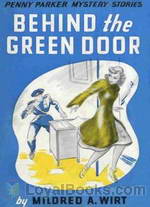 Behind the Green Door
Behind the Green Door
Penny Parker is a teen-aged sleuth and amateur reporter with an uncanny knack for uncovering and solving unusual, sometimes bizarre mysteries. The only daughter of widower Anthony Parker, publisher of the "Riverview Star," Penny has been raised to be self-sufficient, outspoken, innovative, and extraordinarily tenacious. Her cheerful, chatty manner belies a shrewd and keenly observant mind. Penny was the creation of Mildred A. Wirt, who was also the author of the original Nancy Drew series (under the pseudonym Carolyn Keene)... | |
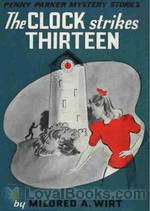 Clock Strikes Thirteen
Clock Strikes Thirteen
Penny Parker is a teen-aged sleuth and amateur reporter who has an uncanny knack for uncovering and solving unusual, sometimes bizarre mysteries. The only daughter of widower Anthony Parker, publisher of the "Riverview Star," Penny has been raised to be self-sufficient, outspoken, innovative, and extraordinarily tenacious. Her cheerful, chatty manner belies a shrewd and keenly observant mind. Penny was the creation of Mildred A. Wirt, who was also the author of the original Nancy Drew series (under the pseudonym Carolyn Keene)... | |
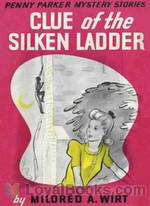 Clue of the Silken Ladder
Clue of the Silken Ladder
In THE CLUE OF THE SILKEN LADDER, Penny investigates multiple mysteries. What is the purpose of the singular silken ladder made by the secretive and somewhat sinister old Japanese curio shop owner? How can the "Riverview Star" obtain evidence that a popular troup of spiritualists really are heartless con artists? Last, who is perpetrating the gravity-defying burglaries that have rocked the town ? Meanwhile, the Parker housekeeper, Mrs. Weems, has come into an inheritance and plans to leave Riverview, much to the Parkers' dismay... | |
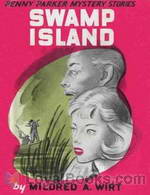 Swamp Island
Swamp Island
Late entry in the Penny Parker teen girl mystery series (1939-47) by one of the early ghostwriters (as Carolyn Keene) of Nancy Drew concerns an escaped embezzler, his revenge on the reporter whose articles helped convict him, and a long missing $50 grand. | |
By: August F. Jaccaci | |
|---|---|
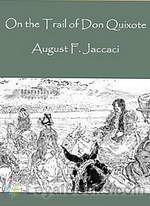 On the Trail of Don Quixote, Being a Record of Rambles in the Ancient Province of La Mancha
On the Trail of Don Quixote, Being a Record of Rambles in the Ancient Province of La Mancha
On the Trail of Don Quixote is an engaging 1890’s “record of rambles in the Ancient Province of La Mancha” by two artist friends, French author August Jaccaci and Spanish illustrator Daniel Vierge. “Both lovers of the book wherein are recounted the adventures of the good Knight and of his faithful Squire,” as Jaccaci explains, the two men set out to record -Jaccaci in evocative prose, and Vierge in pen and ink drawings - their exploration of the landmarks of Cervantes’ “immortal romance... | |
By: H. C. Bailey (1878-1961) | |
|---|---|
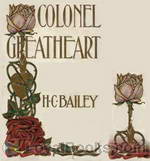 Colonel Greatheart
Colonel Greatheart
This is an unusual story of the English Civil War. There is a good account of the Battle of Newbury, and many historic figures appear: Cromwell (very prominent), Ireton, Prince Rupert, Charles I, Fairfax, and Lambert. The setting for this tale of men and arms is taken from the stirring days of the Bavaliers and the Roundheads, of Puritans and the so-called malignants; but the machines of war are rather in the background, while in the spotlight is a witching woman, a conqueror of hearts and a marker of destinies. The story tells of a woman's ambition that "urges valiant men to perilous deeds". | |
By: John Neihardt (1881-1973) | |
|---|---|
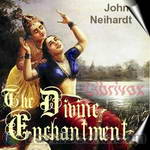 The Divine Enchantment
The Divine Enchantment
When the princess Devanaguy falls into a deep trance-like sleep, she is visited by the god Vishnu: who causes her to fall pregnant with his holy child, Christna.Devanaguy’s sleep is prolonged supernaturally by Vishnu: allowing the god to relate to her his divine secrets through a series of ecstatic visions. Among the mysteries revealed to Devanaguy, she is shown how the gods will shortly powerfully intervene directly in human affairs. When the princess finally re-awakens: she is awestruck by her experiences, and bursts into a spontaneous rhapsody of praise... | |
 The Song of Hugh Glass
The Song of Hugh Glass
This poem tells a story that begins in 1823 - just after the Leavenworth campaign against the Arikara Indians - and follows an expedition of Major Andrew Henry during a series of arduous journeys over the Trans-Missouri region.The poem focuses upon the relationship between two trappers - Hugh Glass and Jamie - who, after fighting and hunting together, consequently develop a close friendship. The poem revolves around the betrayal of Hugh by Jamie: who leaves Hugh alone "as good as dead" to die by the Missouri... | |
By: Henry Edward Krehbiel (1854-1923) | |
|---|---|
 How to Listen to Music
How to Listen to Music
This book is "not written for professional musicians, but for untaught lovers of the art". It gives broad instruction on composers, styles, instruments, venues - and when to believe the critics. | |
By: Margaret Sanger (1879-1966) | |
|---|---|
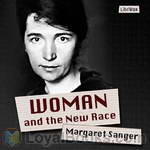 Woman and the New Race
Woman and the New Race
Margaret Sanger was an American sex educator and nurse who became one of the leading birth control activists of her time, having at one point, even served jail time for importing birth control pills, then illegal, into the United States. Woman and the New Race is her treatise on how the control of population size would not only free women from the bondage of forced motherhood, but would elevate all of society. The original fight for birth control was closely tied to the labor movement as well as the Eugenics movement, and her book provides fascinating insight to a mostly-forgotten turbulent battle recently fought in American history. | |
By: Edward Everett Hale (1822-1909) | |
|---|---|
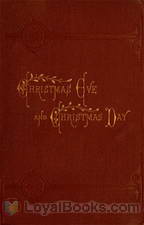 Christmas Eve and Christmas Day
Christmas Eve and Christmas Day
This is a collection of ten Christmas Stories, some of which have been published before. I have added a little essay, written on the occasion of the first Christmas celebrated by the King of Italy in Rome. | |
 Man Without A Country And Other Tales
Man Without A Country And Other Tales
Edward Everett Hale (1822 – 1909) was an American author, historian and Unitarian clergyman. Hale first came to notice as a writer in 1859, when he contributed the short story "My Double and How He Undid Me" to the Atlantic Monthly. He soon published other stories in the same periodical. His best known work was "The Man Without a Country", published in the Atlantic in 1863 and intended to strengthen support in the Civil War for the Union cause in the North. Though the story is set in the early 19th century, it is an allegory about the upheaval of the American Civil War... | |
By: Mary Louisa Molesworth (1839-1921) | |
|---|---|
 The Palace in the Garden
The Palace in the Garden
The Palace in the Garden is the engaging story of three orphans sent to live in the mysterious country cottage of Rosebuds. The inquisitive children piece together the unexpected mystery of the Palace in the garden & all that goes with it. The story has a few twists. This book put me in mind of the Secret Garden.(Introduction by ilianthe) | |
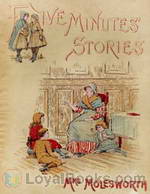 Five Minutes' Stories
Five Minutes' Stories
This is a collection of short stories for children. Listeners may wish to have a look at the text at Project Gutenberg to see the many illustrations accompanying each story. | |